Times Square is the heart of New York City, and one of the world’s foremost tourist attractions. Each day, between 300,000 – 500,000 people walk the streets of Times Square, surrounded by brilliantly illuminated buildings and billboards. That is a grand opportunity for advertisers, one they have been making full use of since the 1900’s. The following images serve to preserve the memory of some of the most fabulous advertisements to ever tower above New Yorkers in Times Square.
Times Square at Night, 1930’s
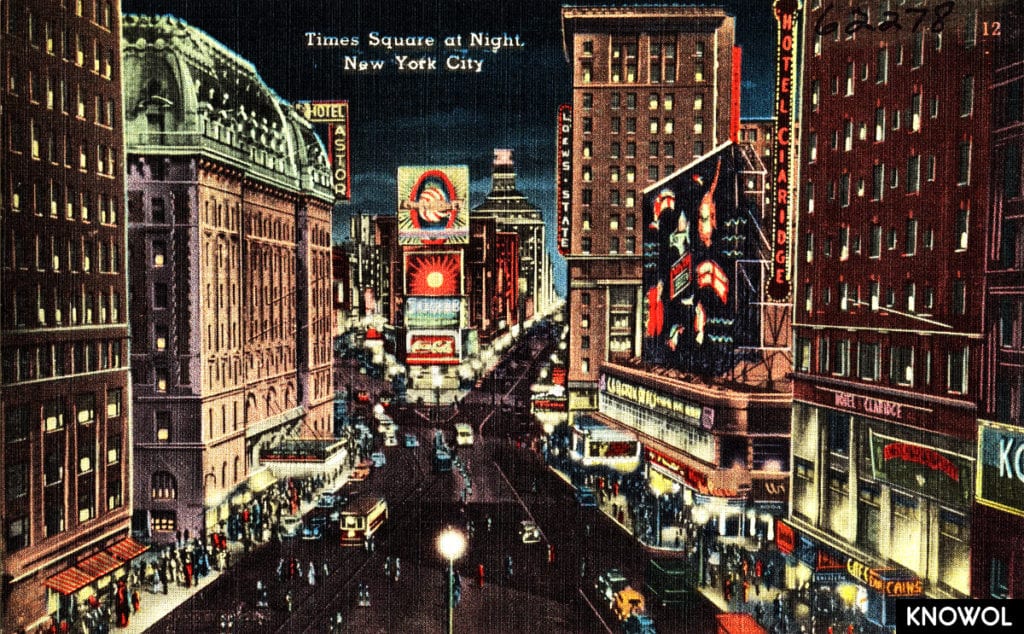
This picture shows Times Square as it looked in the 1930’s. The Astor Hotel can be seen to the left, the Times Building is straight ahead, and to the right is the Hotel Claridge.
The illuminated figures to the right side are on the Wrigley’s Spearmint sign, the largest neon sign in the world at the time.
The Wrigley’s Spearmint Sign, 1936
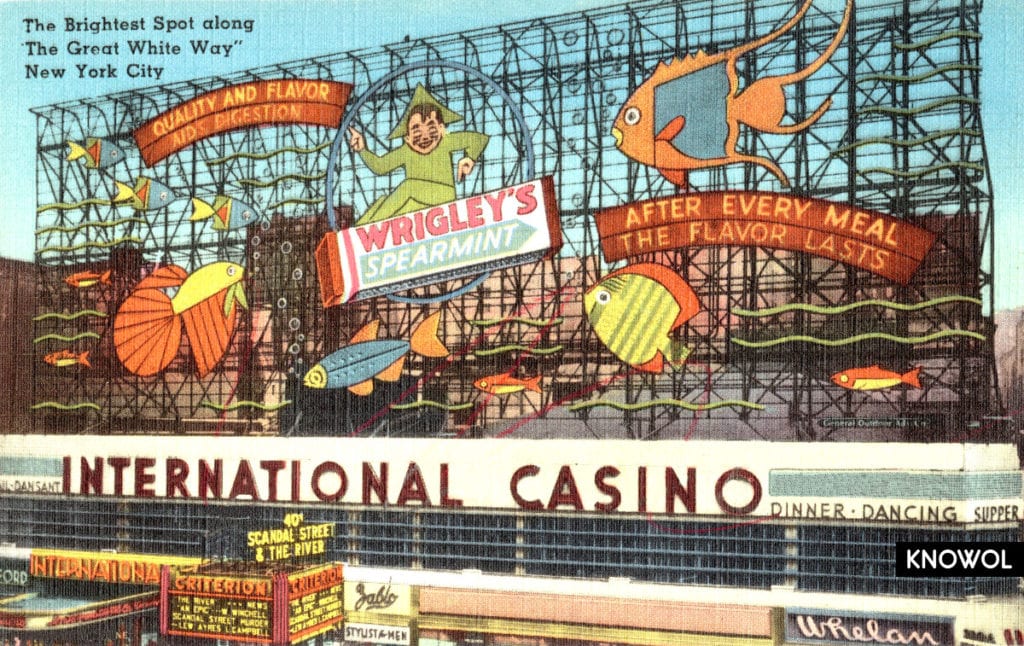
The spectacular Wrigley’s Gum Electric Sign was a million dollar investment, and at the time it was constructed it was the largest advertising erected in Times Square. It extends from 44th Street to 45th Street above Times Square, the largest sign of its kind in the world. It contains 70 miles of insulated wire, has 29,608 lamp receptacles and 1,084 feet of Neon tubing. The electrical current used would service a city of ten thousand. The sign was the work of designer and artist Dorothy Shepard.
The International Casino, which housed the sign, was a two story structure constructed in 1936. The building had a theater, stores, and a nightclub. Despite its name, there was no gambling.
Times Square during the day, 1948
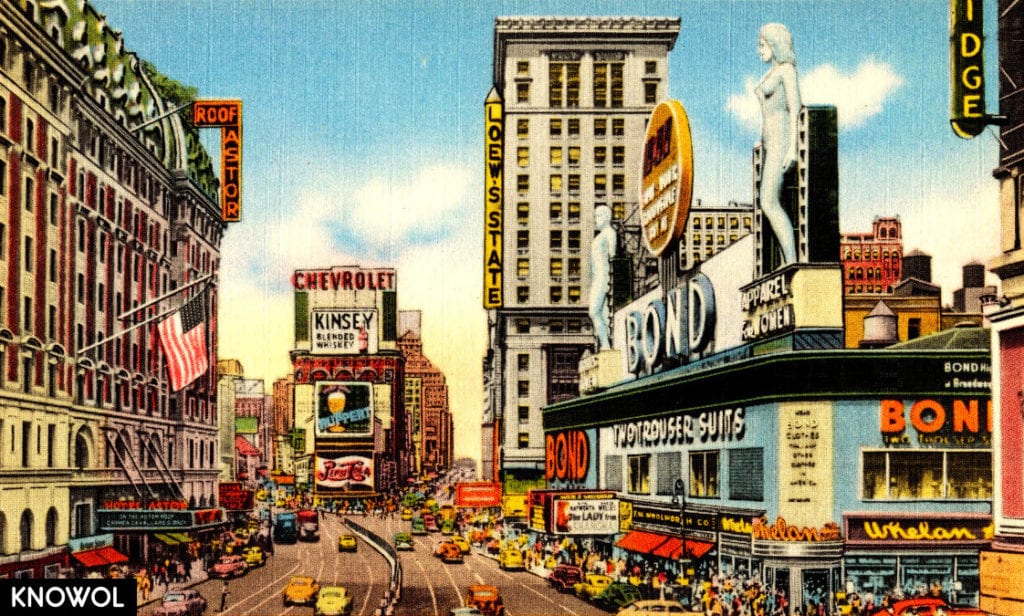
This image shows Times Square as it looked in 1948. The International Casino was replaced with a Bond Men’s Wear store, and the Wrigley Sign was replaced by an even more spectacular display of advertising, the Bond Sign, featuring a 27 foot cascading waterfall.
Times Square at Night, 1948
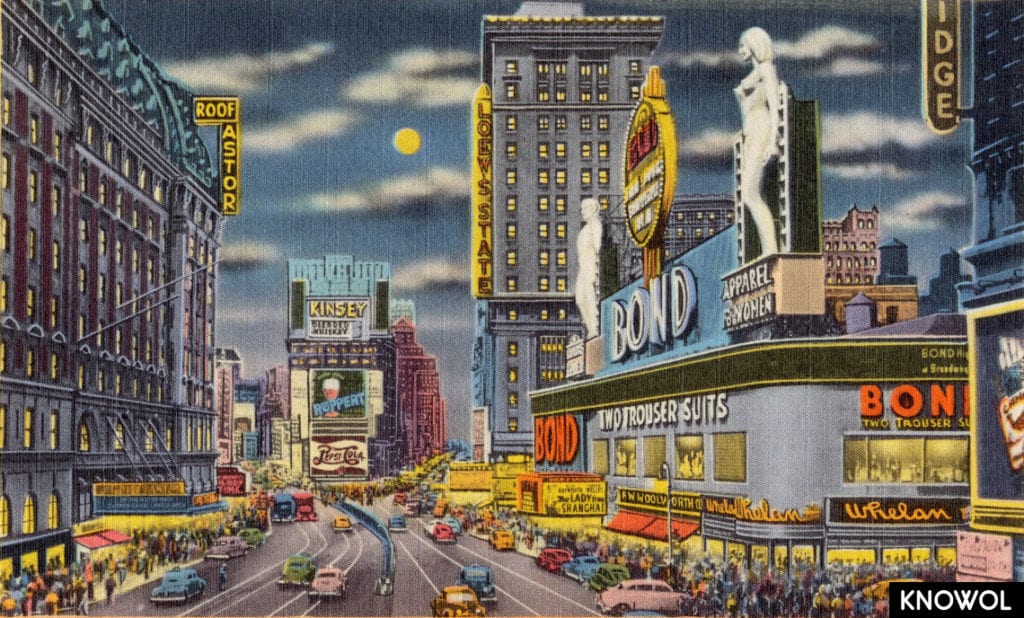
This image shows the same view of Times Square in 1948 as it would have looked at night. If you look closely, you can see the movie theater was advertising Orson Welles new movie, The Lady from Shanghai, featuring Rita Hayworth.
Bond Spectacular Waterfall Sign, Times Square, 1948
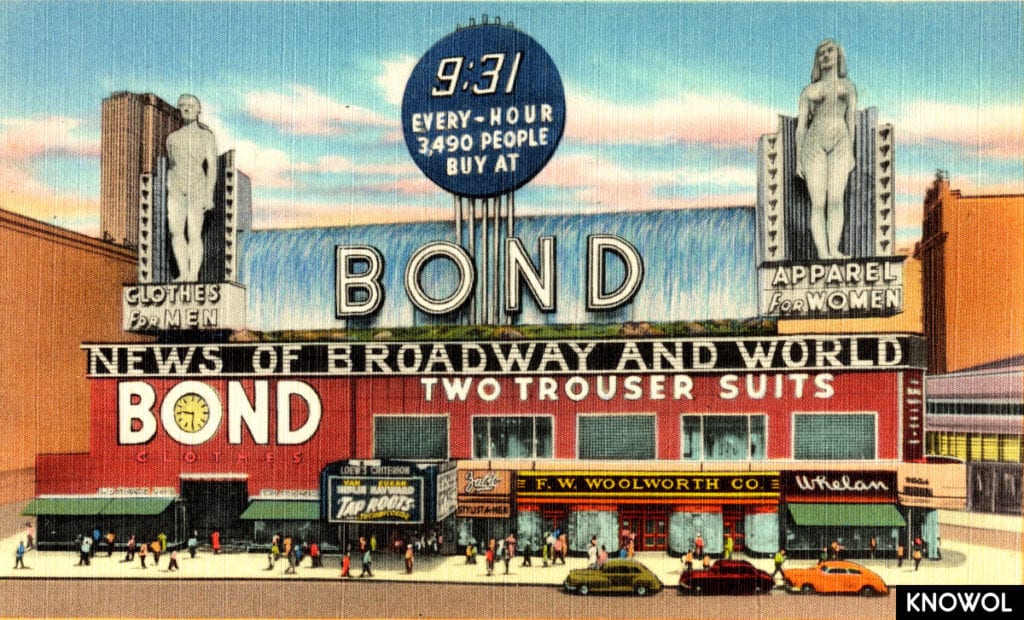
The Bond Waterfall superseded the Wrigley Sign as the largest in the World, and it was constructed in the same location.
The waterfall was created using 10,000 gallons of water that were pumped over the falls every minute by 23 giant pumps on the roof, with the same water being used over and over. The waterfall was 27 feet high and 132 feet long. The giant statues of a man and woman were more than five stories high, and weighed over six tons each. The black sign reading “News of Broadway and World” was 248 feet long, with letters over six feet high, and provided the moving messages which are still a familiar site in Times Square today.
Bond Spectacular Waterfall Sign at night, 1948
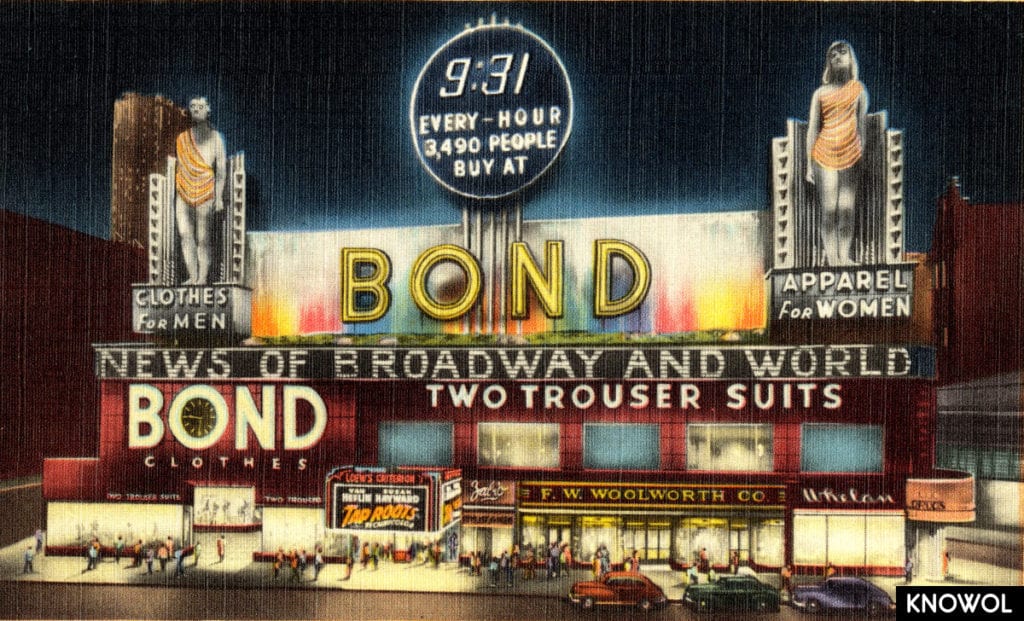
The Bond Sign spanned a full block, from 44th to 45th Street in Times Square. The sign featured 21,500 electric light bulbs, which created over two miles of multi-colored neon. Here you can see how the neon lights lit up the waterfall at night. The building was also home to a Loew’s Criterion movie theater and an F.W. Woolworth Co. store.
Times Square during the day, 1956
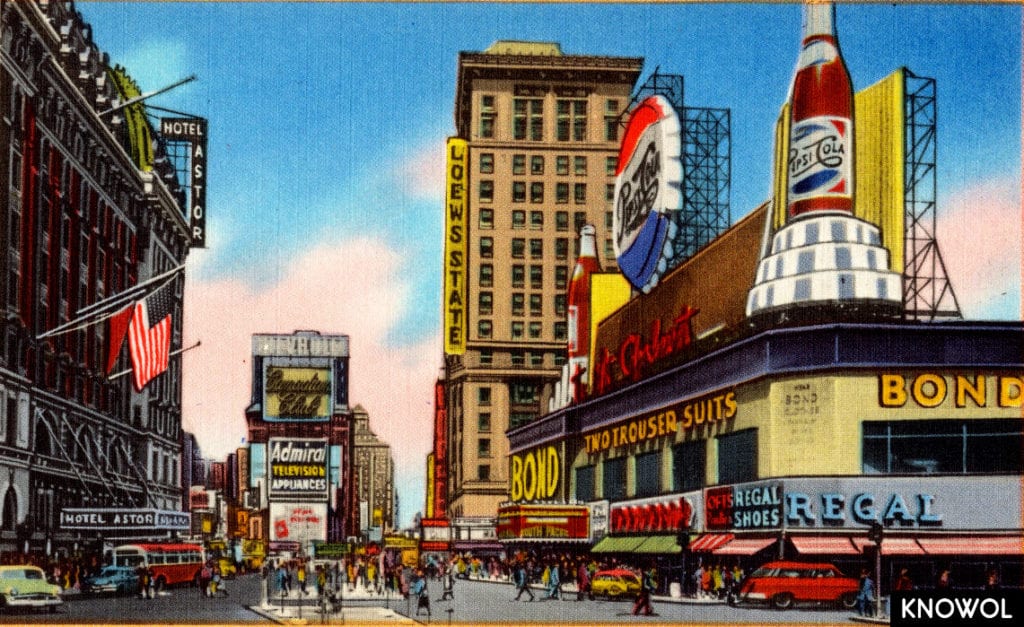
In October 1954, the famous Bond waterfall sign was replaced with a sign for Pepsi-Cola. The Pepsi-Cola billboard retained the waterfall feature but replaced the two figures with Pepsi bottles, and the digital clock with a Pepsi bottle cap.
Times Square at night, 1956
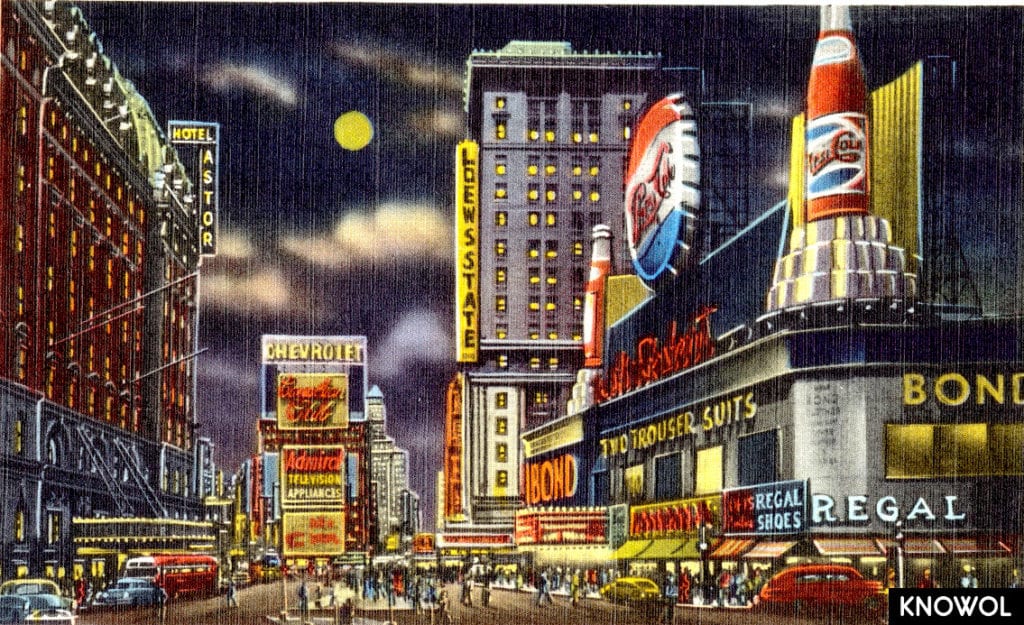
Times Square at Night. Time Square, “the Cross-roads of the World,” is known across the world as a dazzling spectacle of light and color. Here in the heart of the city lies a great theatrical centre, the home of Broadway, the glamorous great white way. Loew’s State Theatre hosted many world premieres over the years, including “The Three Musketeers”, “Ben Hur”, and “The Godfather”.
Times Square by day, 1960’s
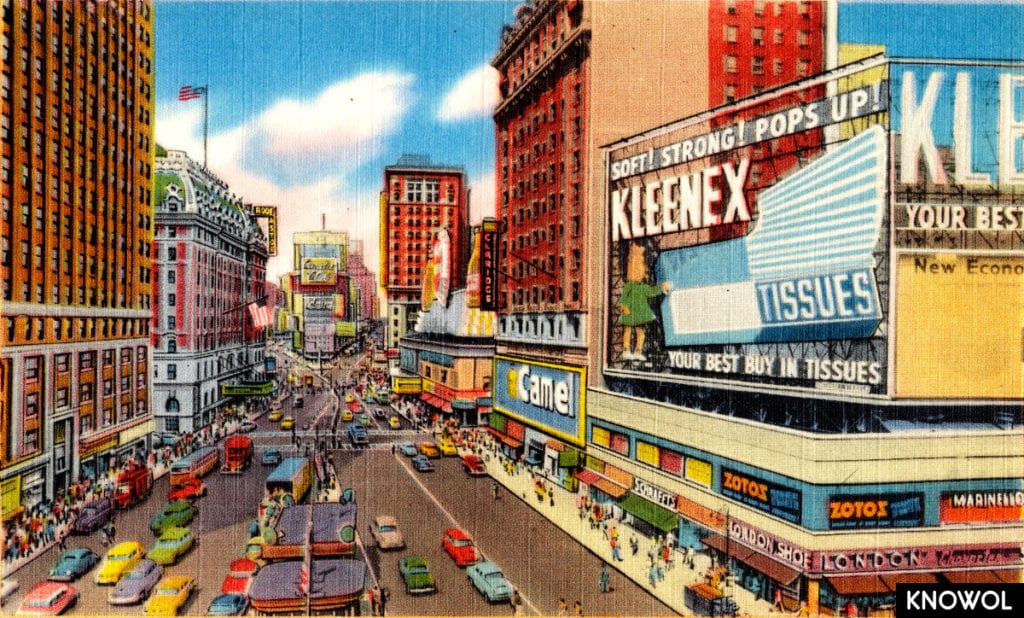
From the 1960s to the early 1990s, the seediness of the area, especially due to its go-go bars, sex shops, peep shows and adult theaters, became an infamous symbol of the city’s decline. As early as 1960, 42nd Street between Seventh and Eighth Avenue was described by The New York Times as “the ‘worst’ block in town”.
Times Square at night, 1960’s
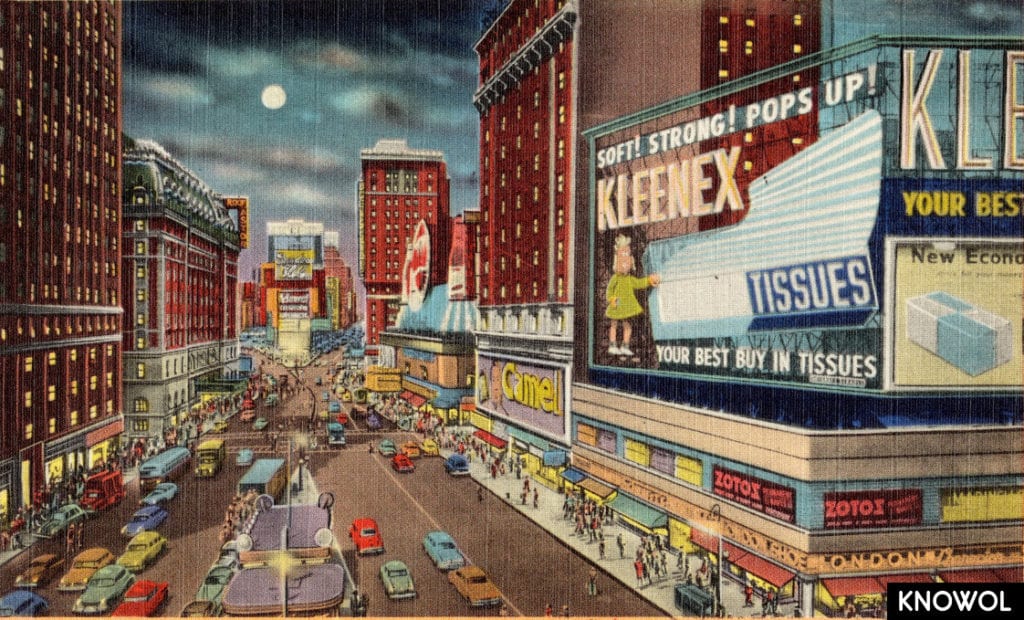
The Kleenex sign seen here was located between 45th and 46th Streets, atop a block of buildings now replaced by the Marriott Marquis Hotel. The Kleenex sign was made of moving neon lights, and the girl named “Little Lulu” skipped across a Kleenex tissue made of more than 25,000 bulbs.
In the 1980s, a commercial building boom began in the western parts of Midtown as part of a long-term development plan developed, and in the 1990’s the area began to be cleaned up and redeveloped into the Times Square you see and know today. We’ll be creating another article showing actual photographs of the development of Times Square, so be sure to sign up for our mailing list!





